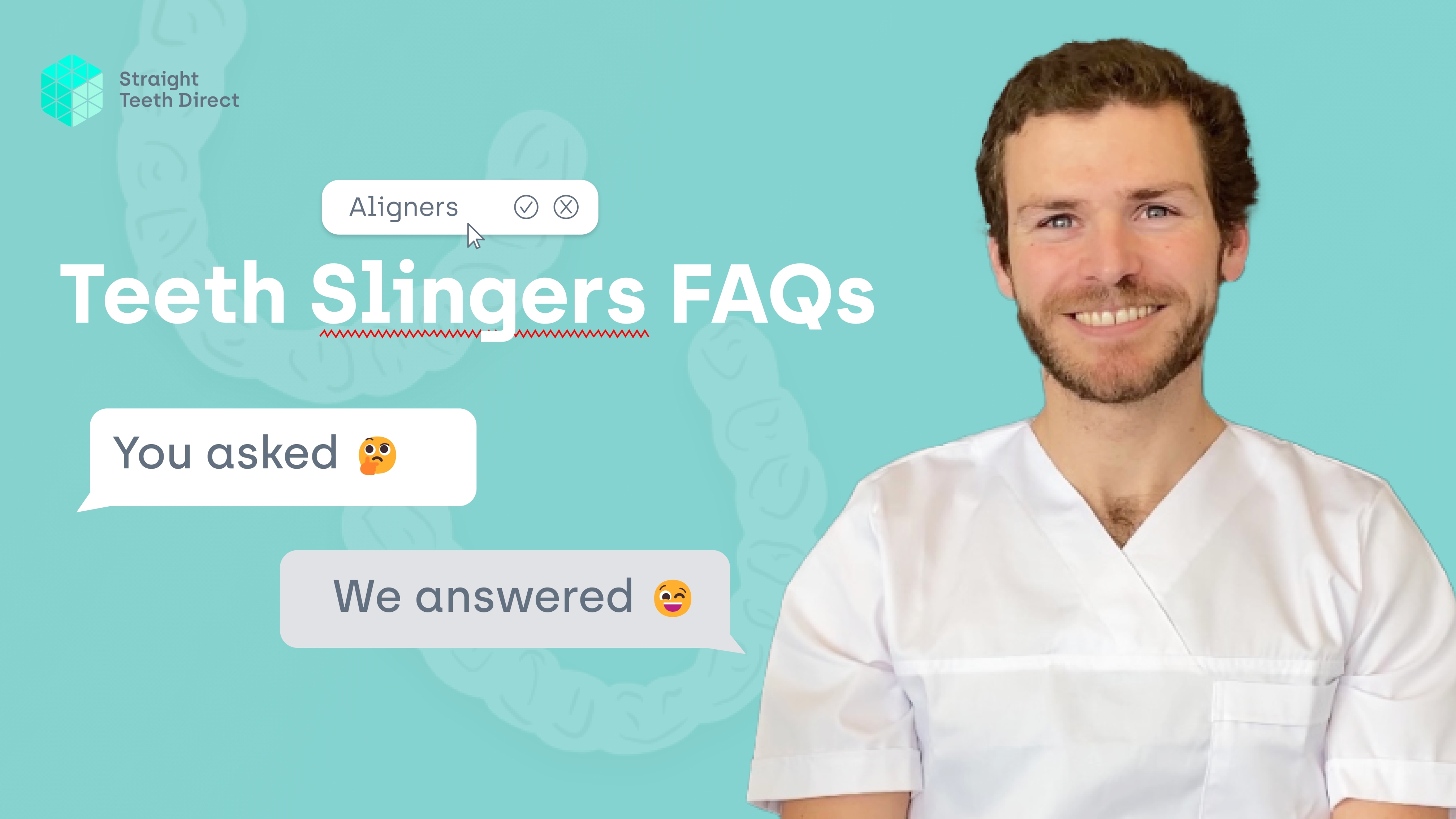
Answering your top teeth aligners questions!

Over the years we’ve found ourselves answering loads of different questions on teeth aligners. It is normal to have doubts, especially when it comes to improving your smile. With this in mind, we have gathered all the questions we get asked daily to present you with the best answers around remote teeth aligners treatment!
Fun fact: Did you know aligners are also known as clear aligners, clear braces, retainers, invisible braces, and Invisalign®? The latter is actually the brand name of a popular aligner manufacturer. Just like the misspellings “aliners”, “sligners”, “invisaline”, “slingers” and even “aliens”, it’s not actually a correct general term for aligners.
Are there any risks with teeth aligners?
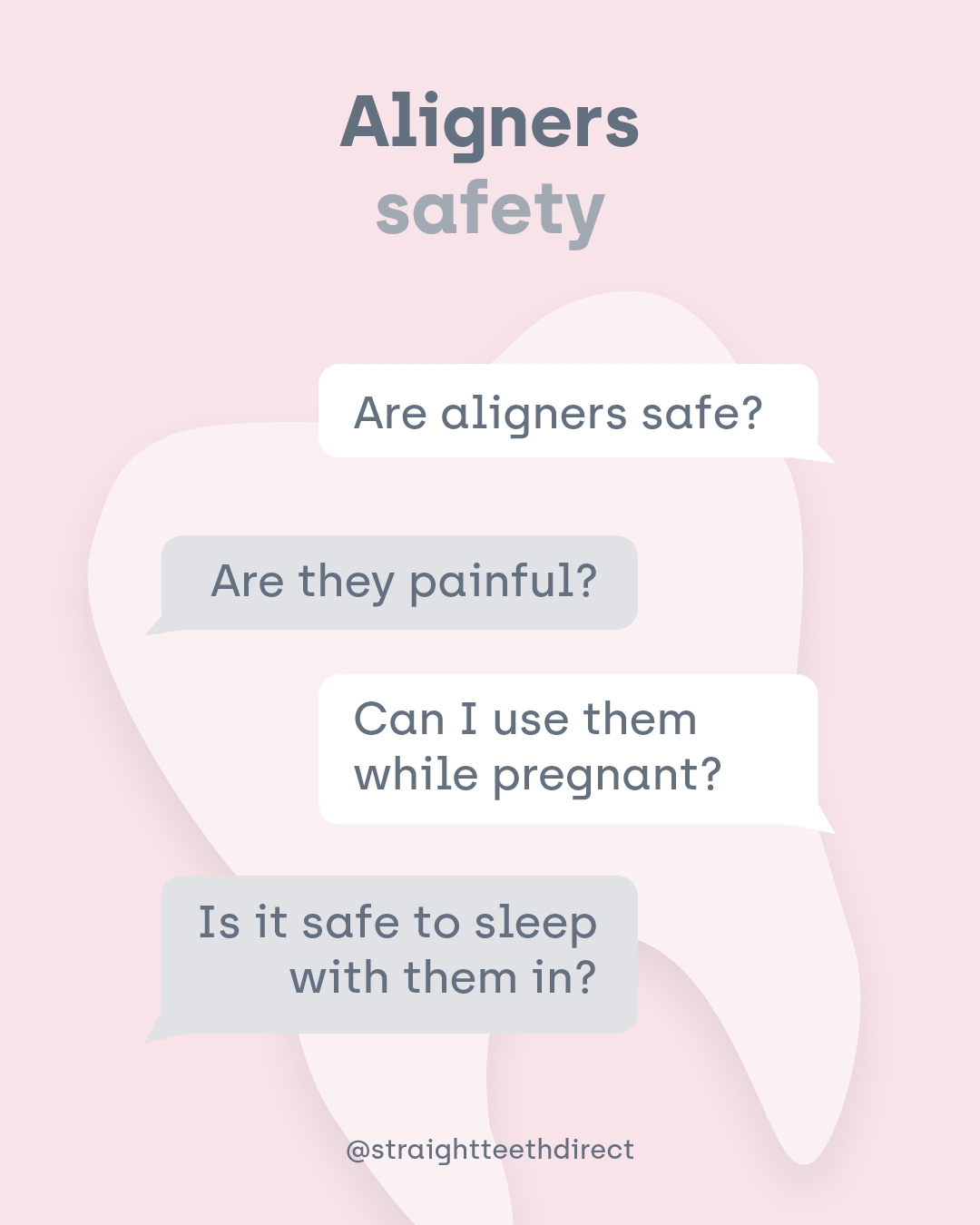
Are clear aligners safe?
Let’s briefly cover some clear aligners history:
Did you know the first clear aligners were developed in 1945 as a form of orthodontic treatment? They were first made according to sequences of plaster models of teeth, each differing slightly from the last until straight teeth were achieved. Teeth aligners have thus been used successfully for nearly a century. The digitisation revolution of the late 1990s introduced computer design and 3D printing, enabling the messy manual process of plaster pouring and model cutting to be digitised, making everything easier and establishing aligners as one of the fastest growing appliances in dentistry.
Now, are clear aligners safe?
First thing first, teeth move naturally throughout life in response to any force. Normally we see this as our lower teeth get more crooked due to forces from our lips and tongue. These lower teeth changes mean the lower teeth push the upper teeth more so they become crooked too. The principle of how orthodontics work is by using appliances to create the opposite direction of force, so the teeth gradually straighten.
Whether you receive treatment via a local clinic or from home with Straight Teeth Direct, clear aligners are safe medical devices prescribed individually. Invisible aligners are not a risky DIY solution!
Custom made from a special inert (biologically non-reactive) BPA, they gradually align your teeth according to an orthodontic treatment plan, which moves the teeth in 3 phases – arch expansion, alignment and fine tuning. At Straight Teeth Direct, your treatment is monitored by a team of dentists who order your aligners for you in stages as you progress through your custom treatment, making it completely safe.
Are invisible aligners painful?
All orthodontic treatment methods require constant directional pressure to stimulate tooth movement and a biological process known as bone remodelling. This constant force can cause teeth to feel tender, resulting in mild to moderate pain – after all, your teeth positions are changing!
However, unlike fixed braces, clear aligners don’t have any wires or sharp edges that irritate your gums, and the force exerted is lighter and more controlled. Each aligner can only move teeth by a maximum of 0.25mm. While they can be slightly uncomfortable initially due to the pressure, this sensation gradually subsides as the teeth get used to the movement and new position. Most people barely even notice they’re wearing aligners after a short while!
Many people get so used to them that they describe it as a satisfying sensation and feeling more uncomfortable to not wear the aligners as the teeth feel more comfortable when they are in the position.
Can I use aligners while pregnant?
Teeth straightening has no impact or effect on pregnancy. There are no systemic chemical / biological changes that occur, it only acts on the teeth.
Pregnancy can have an effect on dental health, it can…
- increase gum inflammation (caused by hormonal fluctuations);
- increase acid erosion (caused by morning sickness);
- increase risk of tooth decay (due to dry mouth).
The great thing about aligners is that they are removable, allowing you to thoroughly brush your teeth and maintain optimal oral health, keeping teeth and gums healthy!
There is no issue starting or continuing your teeth straightening journey while pregnant. However, all examinations and X-rays should be performed ideally pre-pregnancy for you to start your treatment care-free. This is general guidance, as unnecessary radiation exposure is not recommended during pregnancy.
Is it safe to sleep with your aligners in?
Not only is it perfectly safe, it’s necessary! Invisible aligners should be worn for 22 hours a day, and roughly a third of this time will (hopefully) be spent sleeping. That’s due to teeth requiring constant force for them to move properly. Just remember to brush your teeth and stick to your nightly oral care regime before hitting the pillow. Wearing the aligners for less time means you would have less effective tooth movement.
Dental aligners health questions to keep in mind
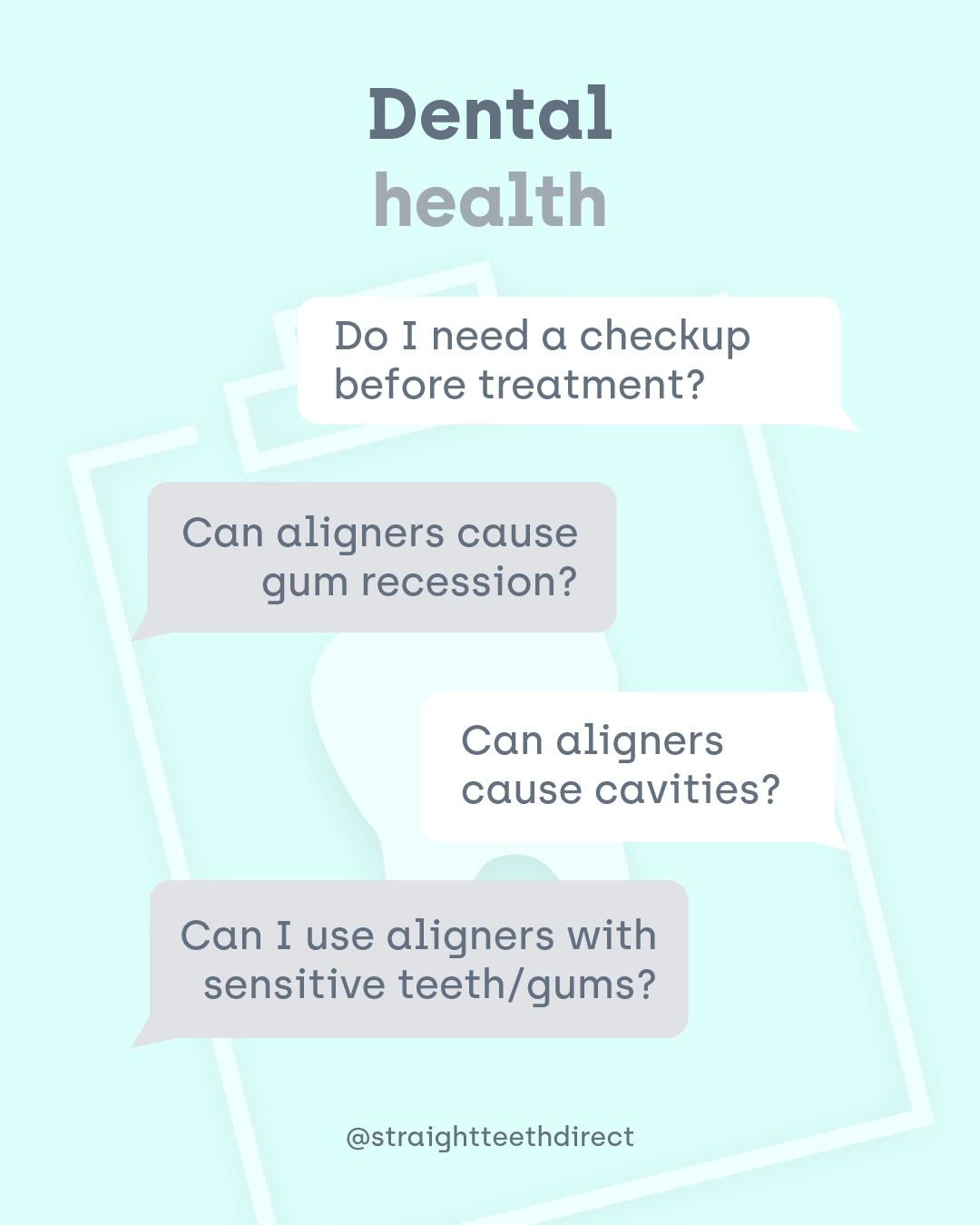
Do I need a dental checkup before starting aligner treatment?
The foundation of cosmetic dentistry is dental health. Before any orthodontic treatment (which also includes invisible aligners) your teeth need to be in a healthy condition. Any existing dental issues such as tooth decay or gum disease must be treated by your general local dentist before starting your treatment, otherwise your teeth may not respond properly to the aligners, possibly causing delays and other issues. When it comes to your smile, it’s better to be on the safe side!
Can teeth aligners cause gum recession?
Gum recession can take place for several reasons and at any time in life. Causes include vigorous brushing and genetic susceptibility due to a thin gum biotype. There are two types of gum biotype, and we usually have one or the other: a thick or a thin biotype. Those with a thick biotype tend to experience less gum recession. On the other hand, the thin biotype is more susceptible to inflammation and recession.
Teeth aligners move teeth but do not cause gum recession. However for those who are already susceptible and have experienced some pre-existing recession before treatment, improper oral care during aligners treatment in combination with already fragile gums can lead to gum recession.
Can aligners cause cavities?
Clear aligners do not cause cavities. Cavities are caused by bacteria depositing acidic waste materials on your teeth. What does cause cavities is a bacteria breaking down sugar, which produces acid. As you can imagine, improper oral hygiene will further increase the likelihood of cavities, also during aligner treatment.
Invisible aligners are made of BPA-free medical grade resin and cover most of your teeth. This means that, if you don’t properly clean your teeth and aligners, harmful bacteria will be trapped between the two, creating the ideal environment for it to grow. Sugary and acidic residue of food and drink can then lead to cavities or other dental concerns.
Can I use aligners with sensitive gums or sensitive teeth?
Yes, aligners will work to straighten teeth even if you have sensitivity issues. Sensitivity usually refers to hot/cold or sweet / sour sensations. These are caused by parts of the tooth / gum being exposed, and aren’t related to tooth position. If teeth are already sensitive then you might find the discomfort bothersome, which is why it’s advisable to look into a targeted oral care regime aimed specifically at improving your sensitivity issues. Personalised dentistry services like Instant Dentist™ can help you find out what your teeth need to give you your healthiest smile before, during, and after aligner treatment.
Dental work (before clear braces)
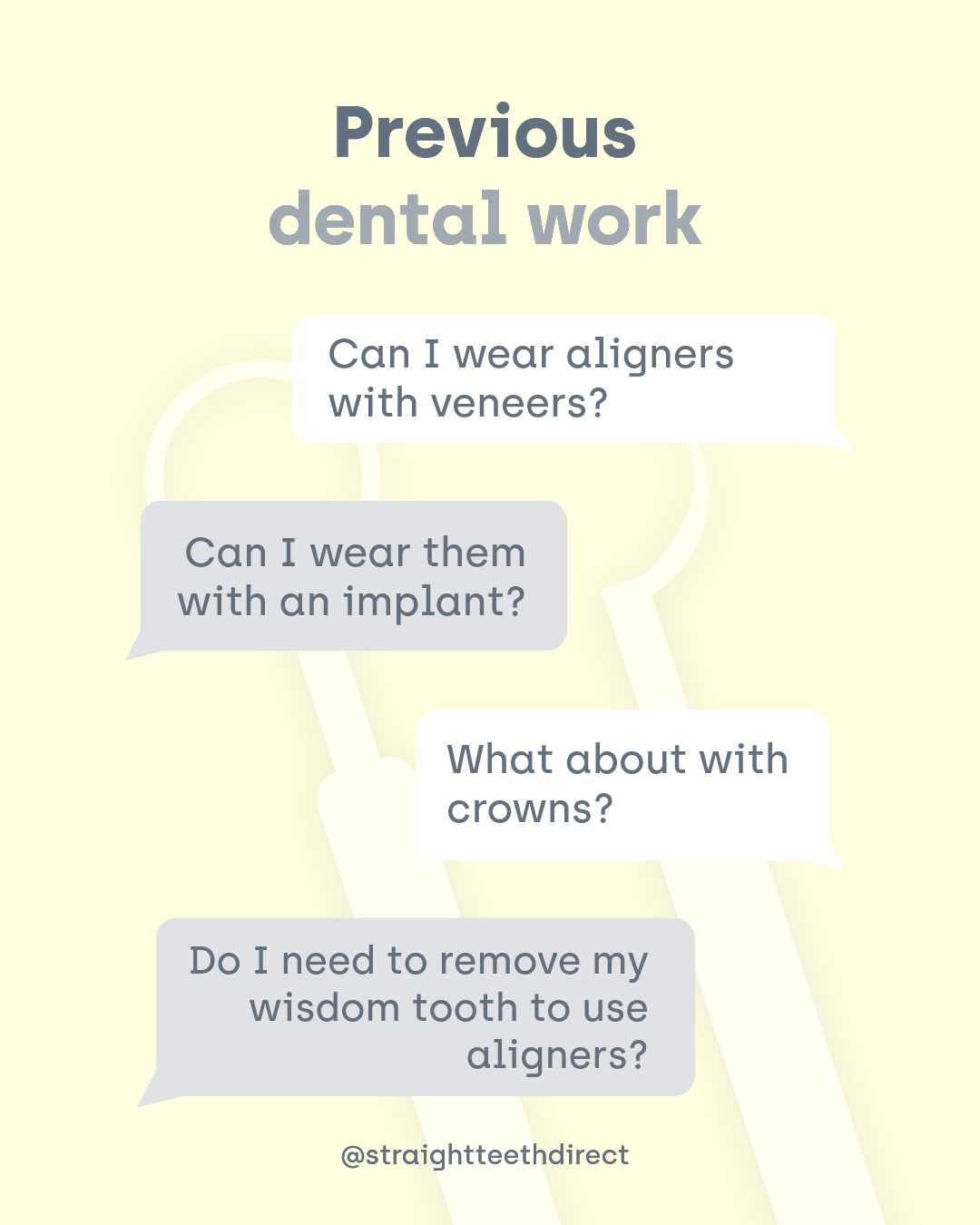
Can I wear invisible aligners over veneers?
Invisible aligners can fit over veneers and can still work on your teeth. However, veneers are already meant to give you a straight smile. Your suitability for at-home aligner treatment with veneers is very case-specific and would need to be assessed by our team of dentists. In some cases, if veneers were used to provide “instant straightening”, the teeth with veneers can be very thick and the ceramic layer may need to be removed before treatment. As indicated above, this needs to be assessed on a case-by-case basis, which is why we offer a free e-consultation for you to find out if at-home aligner treatment is right for your specific situation.
Can I use invisible aligners with an implant?
Implants are anchored in bone and are not designed to move. Whereas aligners are designed specifically to move teeth, so you can see how this could be an issue. However, depending on the type and position of the implant treatment may still be possible. For instance if you’ve got an implant on a back tooth that doesn’t need to be moved.
But remember: there is no one-size–fits-all solution to a case like this. Your suitability for at-home aligner treatment with implants needs to be assessed by our team of dentists.
What about crowns?
Similarly to veneers, it may be possible in some cases to use remote invisible aligners with crowns. This depends on the type and position of the crown. It also depends on the foundational health of the tooth (i.e is it strong and stable) or the type of crown (e.g a crown on a healthy strong tooth, or a crown on a weakened root canal tooth with a post and core – which is very fragile). Again, your personal suitability for teeth aligners with crowns would have to be assessed by our team of dentists.
Do I need to remove my wisdom teeth to use aligners?
Aligners do not move wisdom teeth, so If your wisdom teeth are healthy then nope! Even if your wisdom teeth move during or after treatment, they actually only exert a small force that can’t directly affect the front teeth or your teeth straightening treatment. If your wisdom teeth are causing you health concerns, it may be best to remove them. Aligner treatment does not affect your wisdom teeth. But they can still flare up at any time in life or during treatment, just like at any other point.
Wisdom tooth removal is best done before or after aligner treatment, ideally not during. You will not be able to use your aligners while recovering from the extraction.
Invisible aligner care and routine
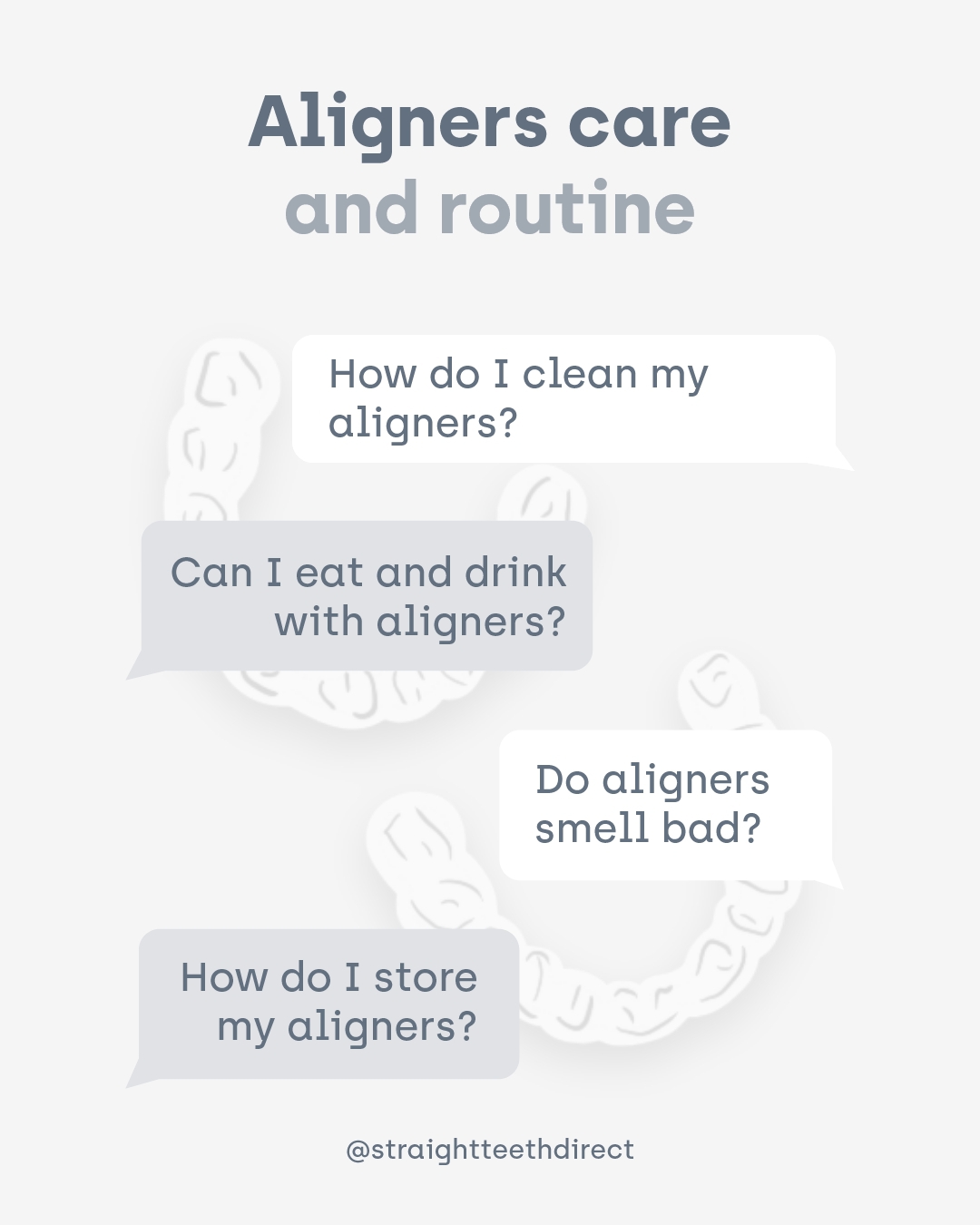
How do I clean my aligners?
Simple: all you need is a soft toothbrush and some clean water to gently brush them before and after every use! Avoid using hard toothbrushes, toothpaste or soaps, as this can cause the aligners to turn cloudy.
It’s also a good idea to compliment your daily aligner routine by cleaning your invisible aligners with retainer or denture cleaning tablets. Just pop an aligner care tablet into a glass of lukewarm (not hot!) water with your aligners, let them soak for 15-30 minutes before gently brushing and rinsing with water. Do this once or twice a week (or as often as you feel is necessary) to keep them sparkly clean.
Can I eat and drink while wearing my invisible aligners?
You should only drink water with your clear aligners in. All other food and drink should be consumed without aligners to avoid debris from getting trapped between the aligners and your teeth, potentially causing discolouration of the aligners or even distortion and cracks.
So, remember to remove them before eating or drinking anything other than water and always brush your teeth before putting them back in.
Do clear aligners smell bad or become yellow?
Not brushing your teeth causes staining and bad breath. Not cleaning aligners will also cause them to discolour, accumulate bacteria and smell bad. Which, coincidentally, isn’t great for your oral health in general. Your aligner care routine is entirely in your hands, so make sure to do it right! This also includes removing your aligners before eating, drinking anything other than water, or smoking. These will definitely stain and damage your aligners.
How do I store clear aligners?
The best place to store and protect your aligners while they’re not in use is in a handy aligner case. With Straight Teeth Direct, you will receive one with your StraightBox aligner kit. Please avoid wrapping your aligners in tissue paper. This offers no damage protection and you might even throw them in the rubbish by mistake!
The Straight Teeth Direct aligner case is small enough to fit in any bag or purse. It has enough space to fit both your aligners, some chewies and other small accessories like an aligner hook or floss. It also features a built-in mirror so you can check your smile while out and about.
General teeth aligners questions

Can children or teenagers use invisible aligners or is there a specific age for aligners?
There is no upper age limit for aligner treatment. However, children are rarely suitable due to two main factors: they are not fully grown and have baby teeth. Clear aligners can only be used for people with full permanent dentition (no baby teeth). Children also experience growth spurts at different ages until well into their teens, which also affects their jaw bones and tooth alignment. Aligners should be used once the teeth have stabilised in their natural position and won’t be affected by growing and changing bone structure.
Are teeth aligners better than fixed braces?
Aside from the fact that, nowadays, invisible aligners and fixed braces are often used for different treatment situations, aligners are (simply put) much more affordable, comfortable, convenient, easier to clean and more aesthetically pleasing than fixed braces. Fixed braces can treat more severe cases where extreme tooth movements are needed, using more force than aligners can. But for about 80% of cases, aligners are the easier, hassle-free option.
Can I just wear aligners at night with the same results?
Short answer: no. In order to create safe and effective tooth movement, aligners are designed specifically for 22h/day wear to get the desired results. Teeth require a constant directional force for at least 15h to begin moving and settling in their new position. Wearing them only at night will interrupt this process too much, as it doesn’t give your teeth enough time under pressure to move and reposition safely or effectively.
However, nighttime only aligners are promoted to be worn for 10 hours, mostly when you’re asleep. As such, teeth have less time to achieve movement and it is highly unlikely that alignment will be fully completed. Make sure to do your research before opting for companies offering nighttime only aligners. They will often charge extra when expectations are not met, or ask you to wear the aligners for longer.
Or, follow the tried and tested route for safe, predictable and effective aligner treatment: 22 hours a day for two weeks per set.
I forgot to wear my aligners for a day – is that a problem?
This is partly the beauty of invisible aligner treatment: you have a bit more flexibility! As a rule of thumb, you should wear your invisible aligners for 22 hours a day because teeth require constant pressure to move. That being said, missing one day, either because you forgot to wear them or had a special occasion with frequent food and drinks involved, will not ruin your entire treatment.
If you do miss a day, it is a good idea to compensate for the hours missed. Just wear your aligners for one or more extra days than originally planned before moving on to the next set of aligners. This will allow your teeth to complete the necessary movement so they are truly ready for the next stage. Remember: wearing aligners for less than the prescribed period can result in insufficient movement. This will delay your treatment and final result.
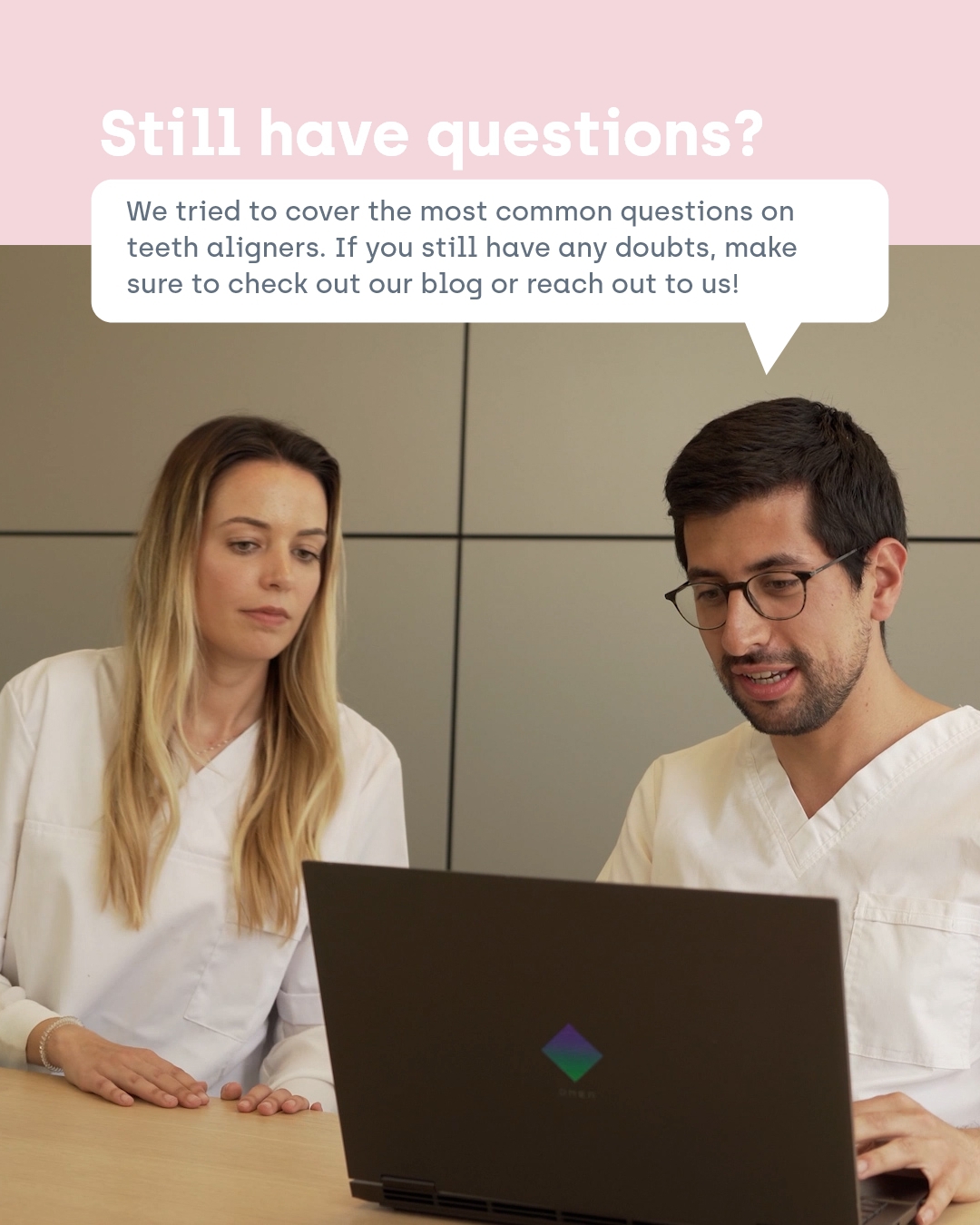
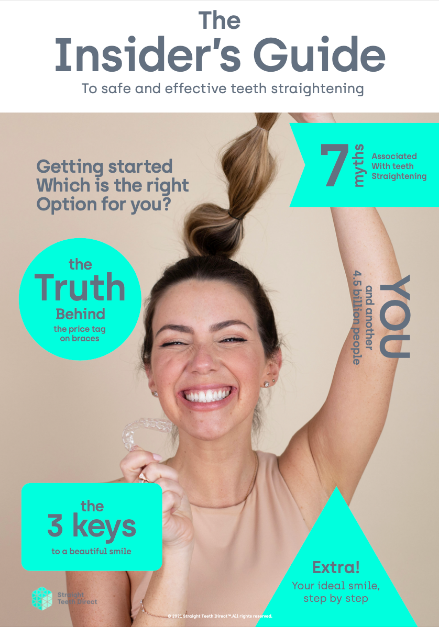
Still thinking about it?
Fill in your email to receiveyour free guide!


















